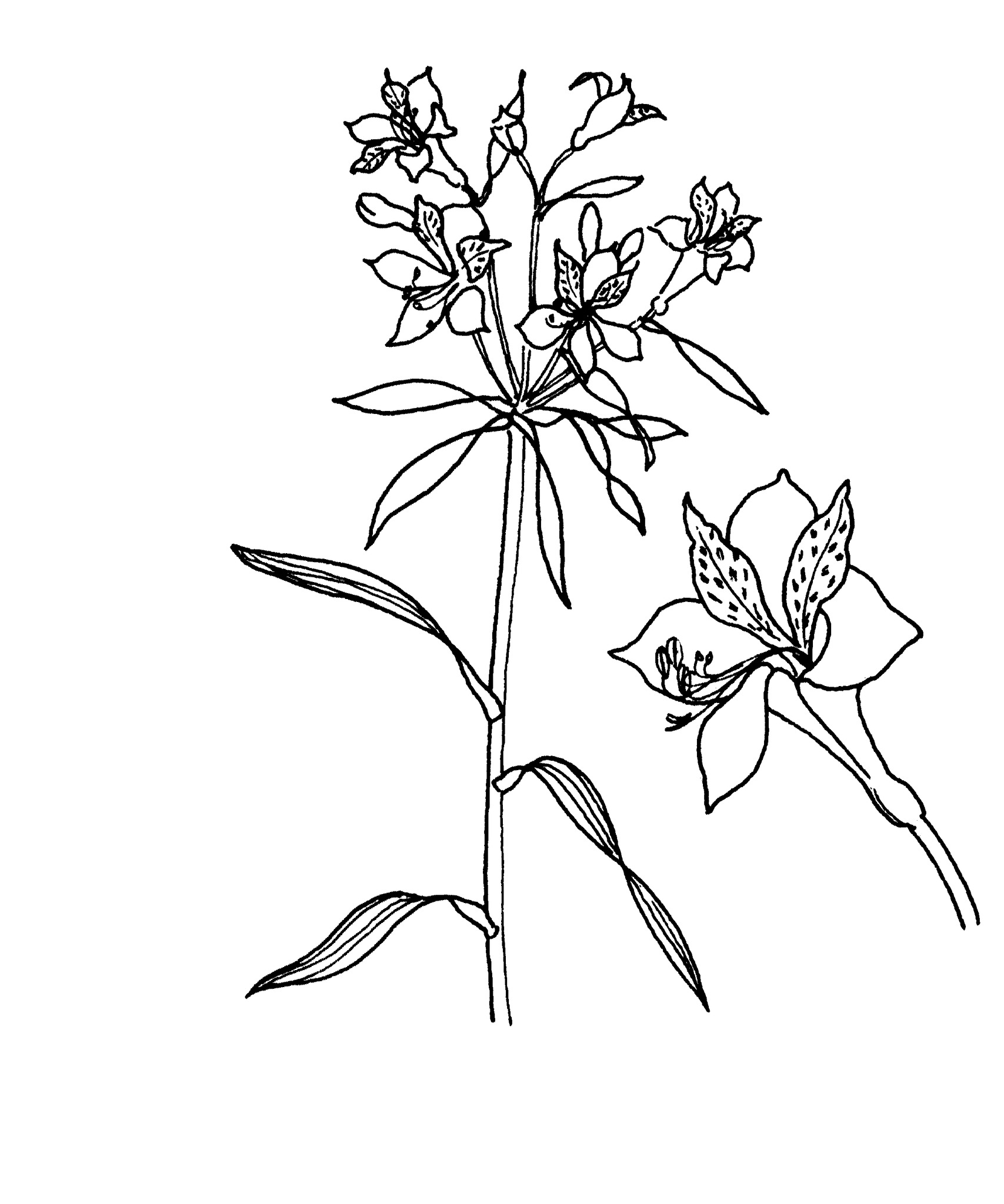
Herb with elongated rhizomes and tuberous roots. Stems to 100 cm, numerous, annual. Leaves narrow-ovate, margins hairless. Flowers numerous, trumpetshaped, 4-5 cm long; spring to summer.Tepals bright yellow to deep orange, upper two inner tepals with reddish brown to black spotting. Stamens shorter than tepals. Syn. A. aurantiaca D. Don.
Sometimes grown in gardens in full sun to semi-shade as a perennial. Naturalised in parts of Victoria and some forms can become weedy.
A. haemantha Ruiz &Pav. from Chile has elongated rhizomes and tuberous roots. STEMS to 90 cm, numerous, annual. LEAVES narrow-lanceolate, margins hairy. FLOWERS numerous, trumpet shaped, 4-5 cm long; spring to summer. Tepals orange to deep orange-red, upper two inner tepals yellowish with purple stripes, lower one reddish with dark red stripes. Stamens shorter than tepals. Sometimes grown in gardens in full sun to semi-shade as a perennial.
A. pulchella L., Parrot Lily (New Zealand Christmas Bells) from N Brazil has elongated rhizomes and tuberous roots. Stems to 90 cm, numerous, annual, spotted purple. LEAVES ovate, margins hairless. Flowers several, narrowly trumpet-shaped, 4-4.5 cm long; spring-summer. Tepals dark red with green tips, spotted with dark brownish markings. Stamens equalling tepals. Syn. A. psittacina Lehm. Sometimes grown in gardens in full sun to semi-shade. Invasive and naturalised in parts of SE Australia. 'Variegata' has leaves longitudinally white striped.
Chile.
Source: (2005). Alstroemeriaceae. In: . Horticultural Flora of South-eastern Australia. Volume 5. Flowering plants. Monocotyledons. The identification of garden and cultivated plants. University of New South Wales Press.

Alstroemeria aurea 'Orange King'
Flowers large, bright orange, non-seeding form. The large flowered 'Felicity' is also listed.